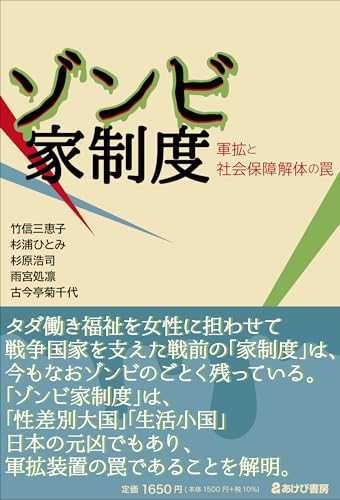2012.11.10 Sat
Carmen Rial
The professor, The Department of Anthoropology, Federal University of Santa Catarina
I have learned about the passing of my colleague and friend Kazuko Takemura through a note of Paola Bachetta (Berkeley University), posted on the internet. Paola wrote:
“Kazuko Takemura R.I.P. She left this earth on December 13, 2011. Brilliant feminist queer scholar, theorist, and translator. A path breaker in Tokyo and the world.A wonderful generous human being. We will miss her at Berkeley where we had the pleasure of directly engaging with her work while she was in residence for a year. We have missed her in my neighborhood where she and Kiyomi were my next door neighbors during that year. Kazuko’s passing is a terrible loss to many people whose lives she touched with her scholarship and life.”
Appropriate words that describe Kazuko as academic and as very “generous human being.” That has been my impression since I have first met her, in 2009, on the day of our arrival in Berkeley. It was scheduled a meeting of researchers at the Beatrice Bain Research Group (BBRG). We only had time to leave the bags in the house and run down Euclid Street to the Barrows Hall.
It’s probably that most of the colleagues with whom we shared coffees and good discussions in that year were there: Jacqueline Adams, Laura Fantone, ElkeHeckner, Lois Hembold, Michele Pridmore-Brown, Xiaohui Zhu, Mary Curran. But I only remember Maria Luisa Femenias, an Argentine philosopher, that I have already known, and Kazuko Takemura. Why Kazuko? Not for anything she said during the meeting. Rather because, in a gesture of gentle hospitality, she shows us the campus, taking with her bike in one hand and a yellow helmet on the other. We went to see the Sproul Hall, the historic site of the first demonstrations of May 1968. “Here, Barack Obama spoke” she said, as she passed by to get a ticket for a play at the box office in front. We have sympathized immediately. It was the beginning of a brief and intense intellectual exchange and friendship.
In the weeks that followed, we often have been together. At Paola’s home for a dinner, at the BBRC lectures, or for car rides. On March 21th, 2009, I remember, I wrote in mydiary: “I discovered a book by Trinh T. Minh-ha on the shelf here at home, with an interview with her by Kazuko Takemura. It was a long interview, which explored various aspects of the work of Minh-ha.” Thisgave us the idea to suggest Minh-ha as a keynote at the Congress Fazendo Genero (Making Gender) in Florianópolis.
On April 28th, Kazuko gave a lecture at Barrows Hall. She was introduced by Thrin Min-ha, with a long and poetic opening that showed her respect for the academic work and friendship she had for Kazuko. The lecture was called Violence-Invested (non) Desire: Global Biopolitics Phallomorphism& Lethal. She sent us a copy:
“Let me start with the title of my speech. First, I planned to call it “Is Violence Still Masculine?”. This interrogative style expects an answer, “yes” or “no,” in a dichotomous way based upon sexual difference. But I wanted to stay away, for a while, from the issue of sexual difference and examine that sort of violence which is seemingly confusing sexual hierarchy. Specifically, the reported photos of Abu Ghraib prison gave me a great shock, in which women soldiers abused male Iraqi detainees, physically and mentally. This is the reverse of the familiar schema of violence: male perpetrators vs female victims.
Why are we shocked by these photos? Does violence practiced by women invalidate feminist claims against the brutality of patriarchy? What impetus drives the women soldiers to perpetrate such acts? Is sexual desire related to them? Or other kinds of desire, if there are? Or, is desire itself engaged in this abuse? If not, what else drove them into such atrocities?
I’m going to think about these matters today, under the title of “Violence-Invested (non-) Desire.” Its subtitle, “Global Phallomorphism & Lethal Biopolitics,” intends to show my aim of reconsidering the relationship between sexual difference and what could be called a new (emerging) deployment of violence”
We will always remember Kazuko as a clever feminist, a critique of contemporary world events. Moreover she is also a friend, open for an invitation for coffee or for some adventure. With Kazuko, we have visited the Stanford campus, traveling by train and being guided by Michelle. We have also been at the Santa Cruz campus, to attend a lecture by Gail Rubin on the anti anti-pornography theme that particularly interested her. Kazuko showed me the way for the beautiful n.1 road that host Pacific coast’s winds. With good humor, we shared jokes about the fact that we were going to meet a real dinosaur of American feminism. And by our astonishment, Rubin appeared, in a perfect self-irony, wearing a tie with drawings of dinosaurs!
Kazuko counted the days to the Kiyomi’s arrival, and as soon as she got in Berkeley she invited us to dinner at a Louisiana restaurant. I found them again months later, at the airport of Florianopolis, in southern Brazil, where he was attending an invitation from Congress Fazendo Genero, to participate in a roundtable. Kazuko and Kiyomi got off the plane with broad smiles and colorful summer shirts, purchased during their tour of South America. I was waiting beside Trinh-Min Ha, who had accepted to be the keynote at our conference, thanks to the encouragement of Kazuko and Paola.
Kazuko’s speech, “Diaspora, Sexuality and Becoming Something Non-Existent”, in the main auditorium of the Santa Catarina Federal University was excellent. It was published in Portuguese in the book Fronterias de Genero (Boundaries of Gender (ed. Mulheres, 2010).
Our last email exchange occurred soon after the Tsunami. Kazuko wrote me:
Sun, 13 Mar 2011 11:21:28 +0900
Hi Carmen,
Thank you so much for your kind concern. Kiyomi and I are both OK, and my friends and students from the northern part of Japan as well as their families are fine, I have heard. But so many people are killed and injured, and still missing. The earthquake and tsunami, which occurred in tandem on Friday, was so devastating and ferocious, and we still–even here in Tokyo–feel afterquake many times. Moreover, a dander of meltdown at two of the atomic plants is now worried about.
As for me, I am now hospitalized for a removal of fibroid. Don’t worry. I am OK. The main aftermath of the earthquake is for me that it might cause a delay of my surgery, which is to be scheduled for tomorrow, March 14th. But, if so, the operation will be made on Thursday, at latest, the doctor said. It might not be so good timing for undergoing surgery.
I hope that sufferers and victims are rescued, medicated, and supported as soon as possible and in a full scale, and also that such an awful thing as a meltdown never ever happen!!
I’ll keep you posted.
カテゴリー:Eulogies
 慰安婦
慰安婦 貧困・福祉
貧困・福祉 DV・性暴力・ハラスメント
DV・性暴力・ハラスメント 非婚・結婚・離婚
非婚・結婚・離婚 セクシュアリティ
セクシュアリティ くらし・生活
くらし・生活 身体・健康
身体・健康 リプロ・ヘルス
リプロ・ヘルス 脱原発
脱原発 女性政策
女性政策 憲法・平和
憲法・平和 高齢社会
高齢社会 子育て・教育
子育て・教育 性表現
性表現 LGBT
LGBT 最終講義
最終講義 博士論文
博士論文 研究助成・公募
研究助成・公募 アート情報
アート情報 女性運動・グループ
女性運動・グループ フェミニストカウンセリング
フェミニストカウンセリング 弁護士
弁護士 女性センター
女性センター セレクトニュース
セレクトニュース マスコミが騒がないニュース
マスコミが騒がないニュース 女の本屋
女の本屋 ブックトーク
ブックトーク シネマラウンジ
シネマラウンジ ミニコミ図書館
ミニコミ図書館 エッセイ
エッセイ WAN基金
WAN基金 お助け情報
お助け情報 WANマーケット
WANマーケット 女と政治をつなぐ
女と政治をつなぐ Worldwide WAN
Worldwide WAN わいわいWAN
わいわいWAN 女性学講座
女性学講座 上野研究室
上野研究室 原発ゼロの道
原発ゼロの道 動画
動画


![[広告]広告募集中](https://wan.or.jp/assets/front/img/side_ads-call.png)












